Update May 5, 2018 - IO's failed audition as K.I.T.T from Knight Rider :-) But not bad for just four leds.
Just having some fun with the instruction cards
The ROM instruction board all finished and tested. Now need to wire up more cards.
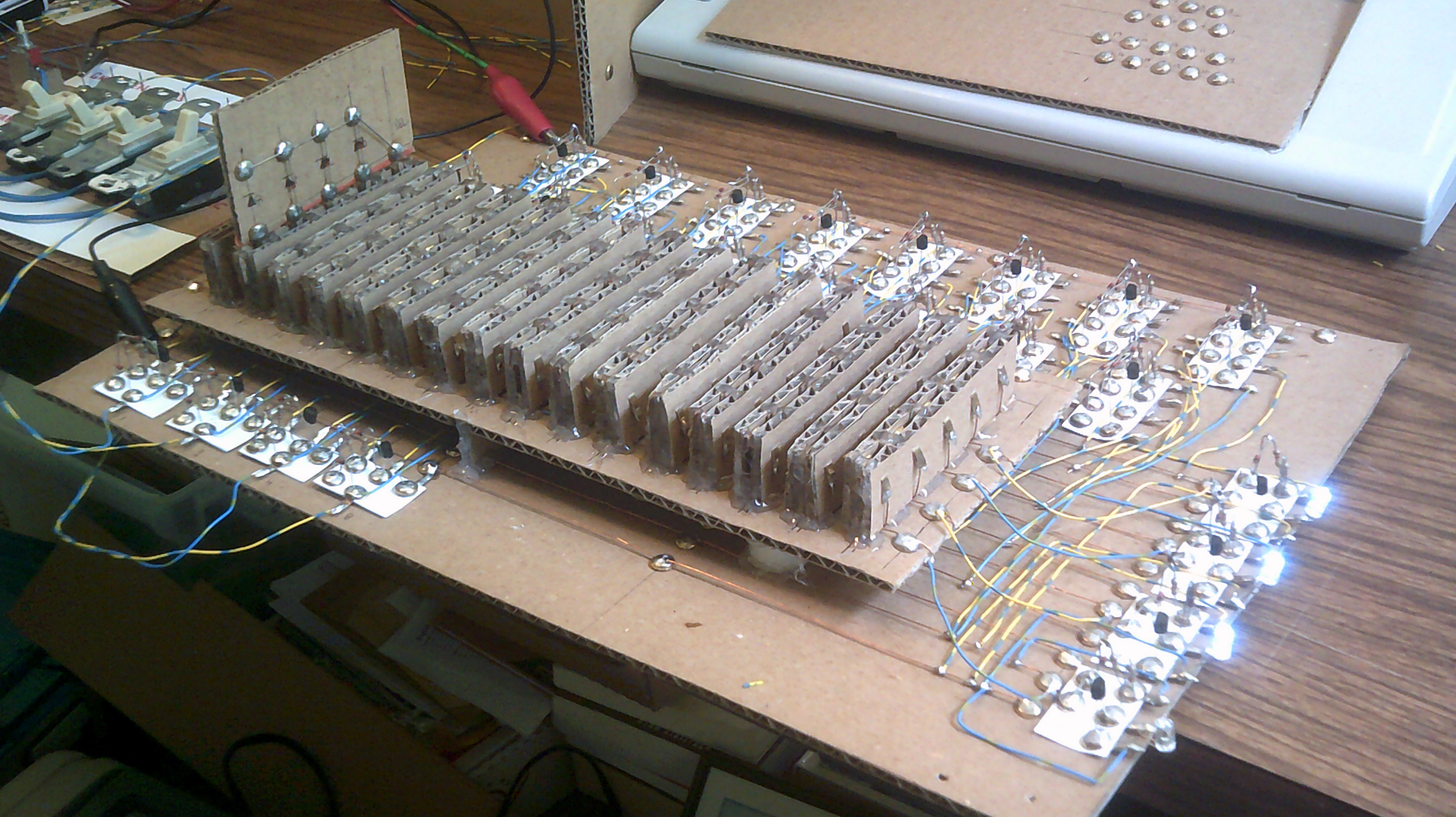
Update May 1, 2018 - All of the logic is wired and the board tests OK after finding one shorted wire.
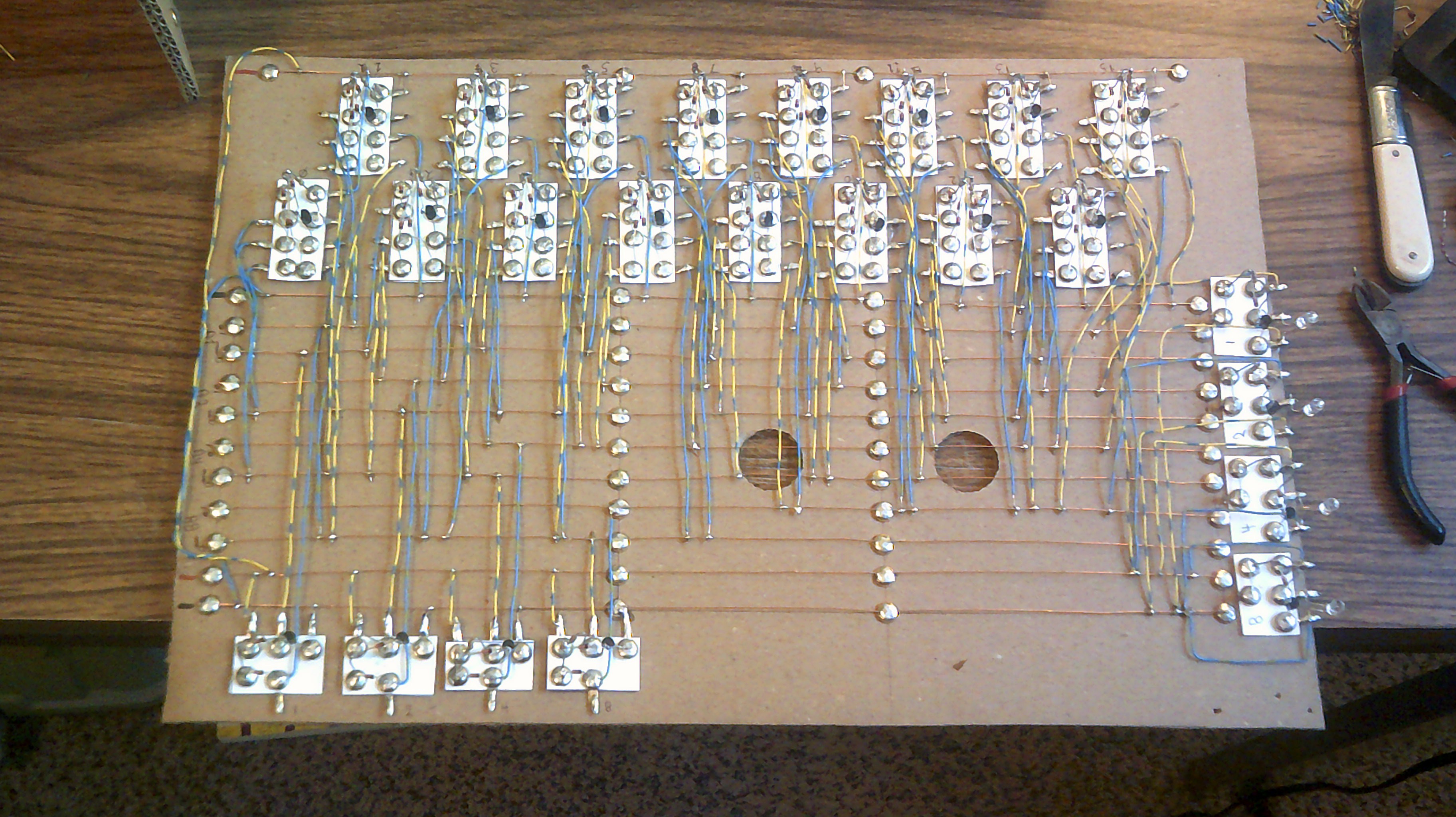
Update April 30, 2018 - Here is the progress today. The first image shows the power wiring.
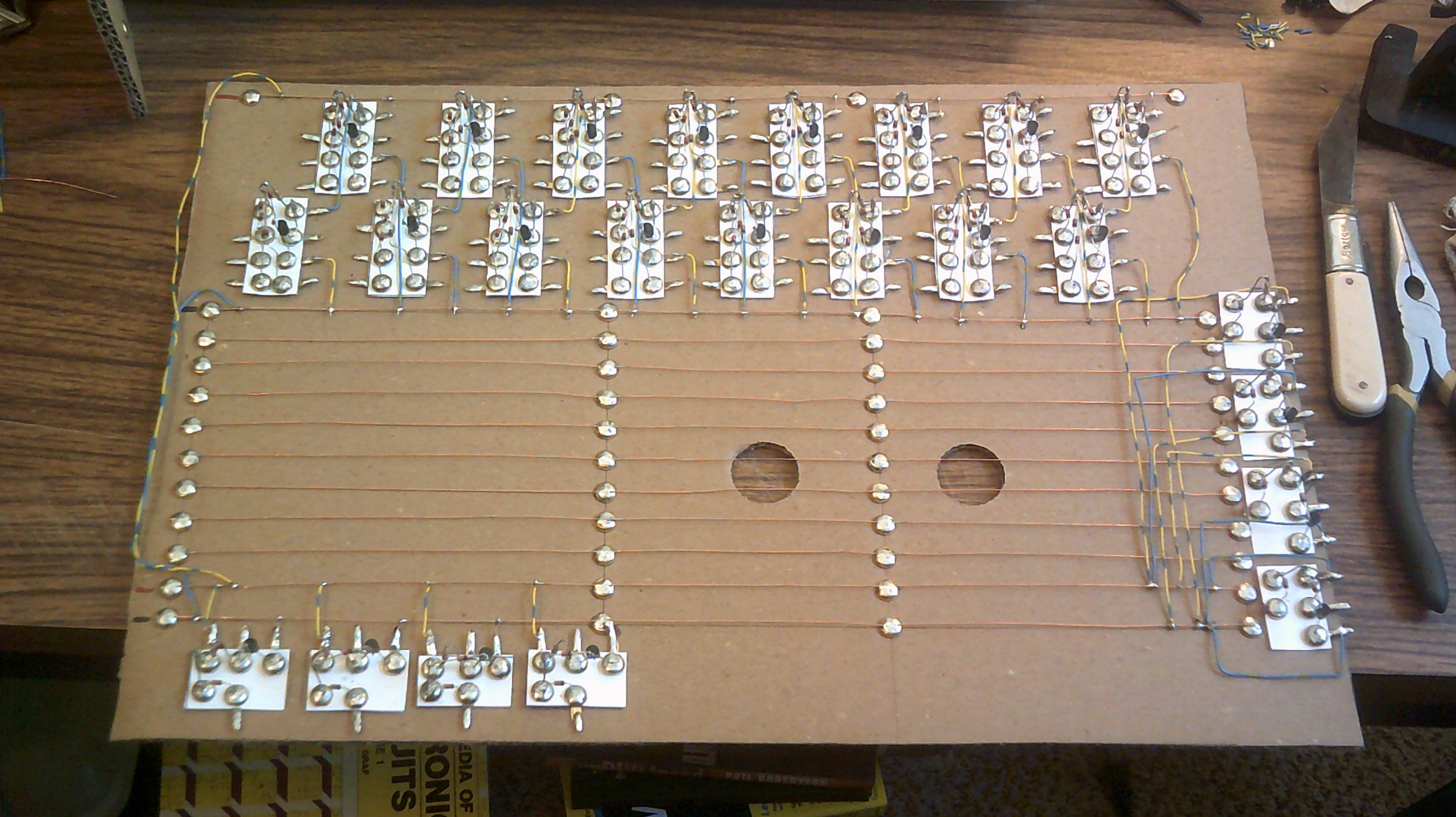
This next image shows how the first two 4 input nand gates are wired to the address buss.
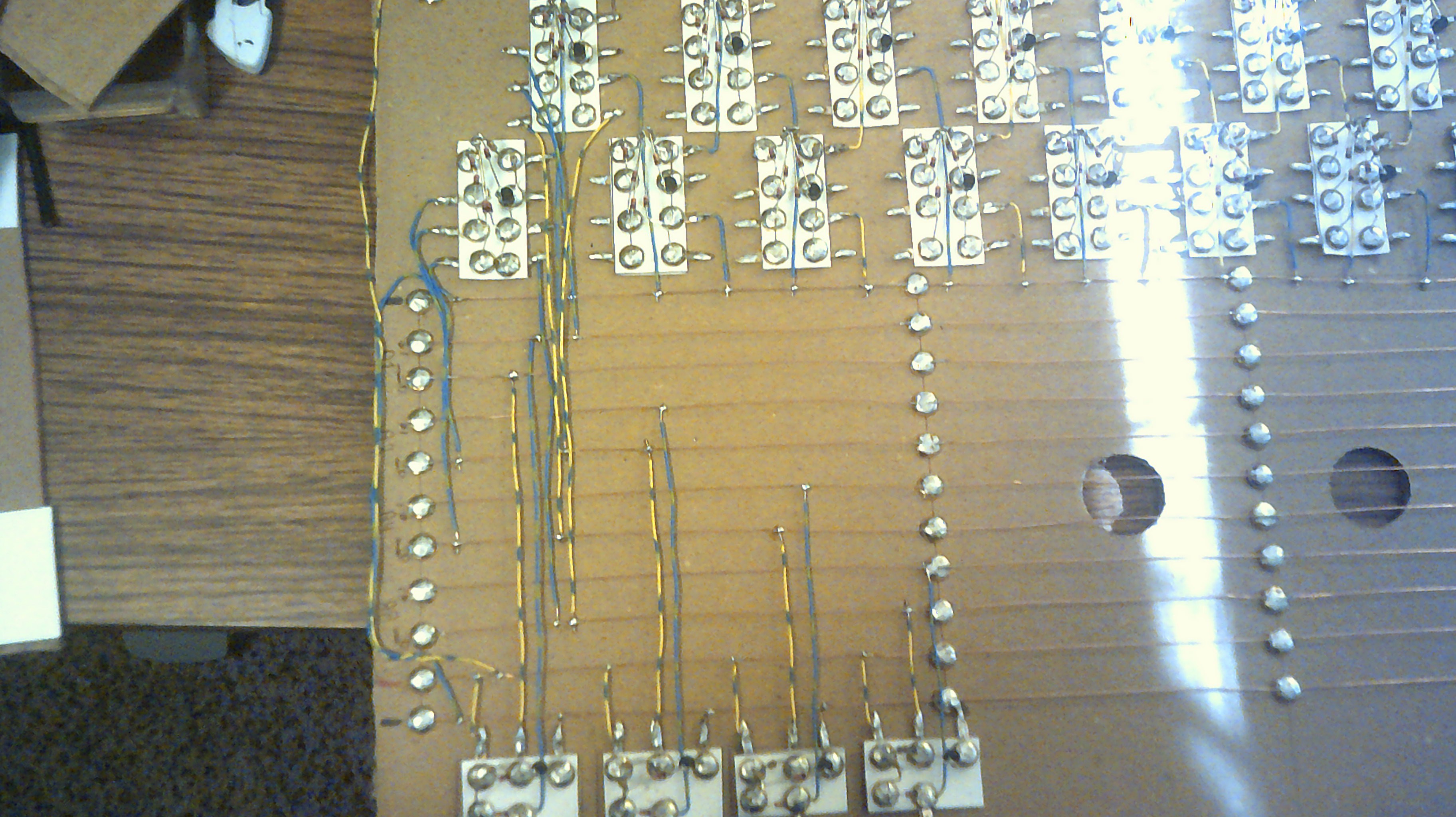
This shows the unit being tested. the simulated address switches are set for address 0001 and a rom instruction card with the value of 0111 is inserted into the second slot. The output leds indicate 0111. So far, so good :-)

Update April 29, 2018 - I have set up the logic gates and ready to do some serious wiring. The four gates on the lower left is the address input from the PC. The 16 Nands at the top decodes the address and selects the required instruction to be read. The four gates on the right side is the instruction output to be sent to the CU.
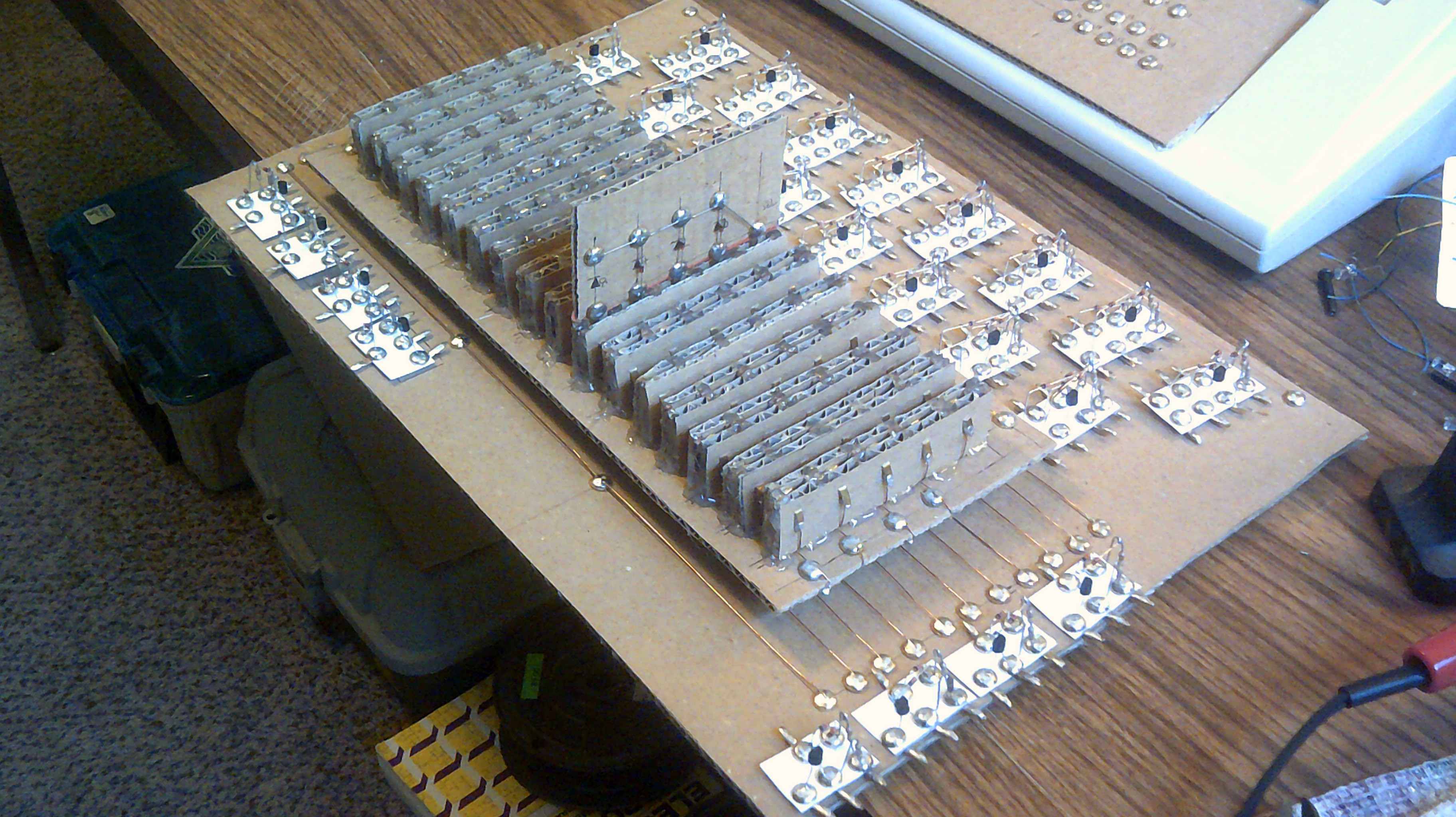
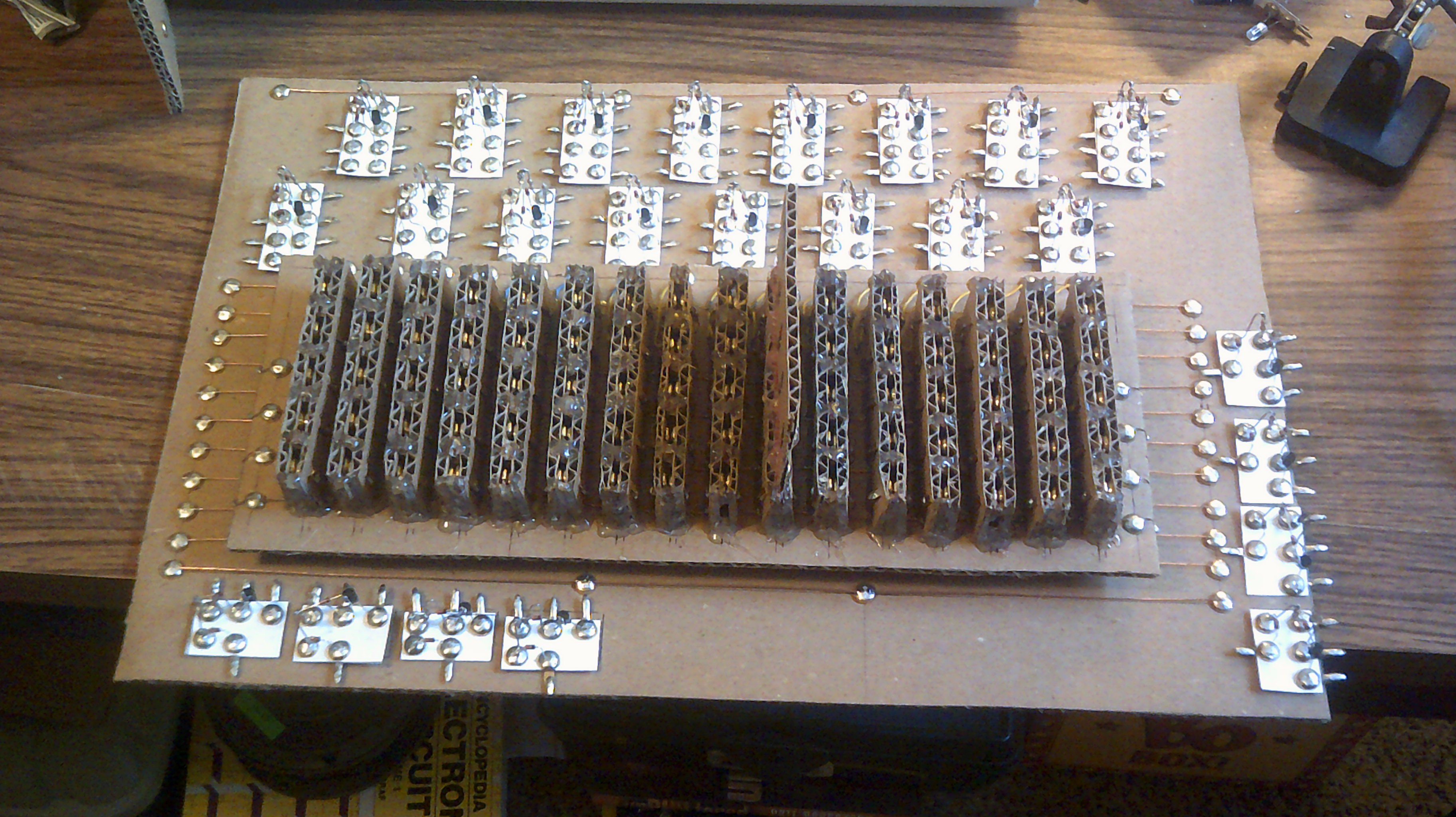
Update April 17, 2018 - After the usual delays I am getting back to wiring up the logic gates and get back on track with the Brain Warp instructions.
Starting to layout the construction and wiring for the logic board that will read the program ROM cards. Just like all other wiring on IO, this will be a large board...
The ROM back plane will mount above the logic circuits...

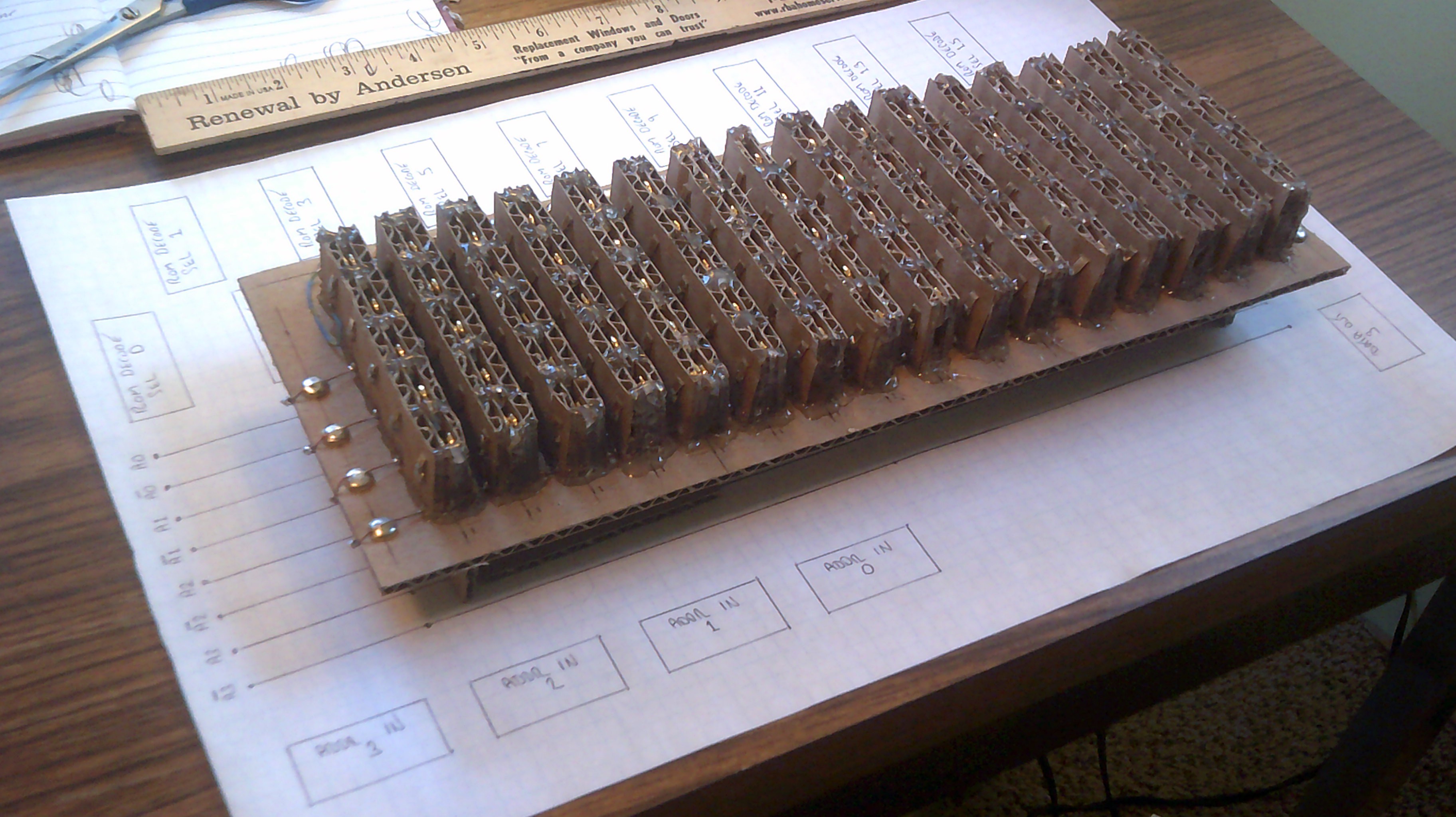
 Dr. Cockroach
Dr. Cockroach
Discussions
Become a Hackaday.io Member
Create an account to leave a comment. Already have an account? Log In.
This is beautiful :D
Are you sure? yes | no
Thanks :-D The Control Unit is next and that's my big mental block...
Are you sure? yes | no
Very cool! Coming up with small 16 instruction programs sounds like a fun challenge!
Are you sure? yes | no
Thanks, Makes the 1k challenge look easy ;-) 16 nibbles is not a lot to work with but still useful as a test bed.
Are you sure? yes | no
Its been a privilege to watch it come together patiently day by day. Still never ceases to amaze me :-)
Are you sure? yes | no
Its been a privilege to be here and get to know you all :-)
Are you sure? yes | no
Nice looking work there, as always, I'm impressed.
Are you sure? yes | no
Thanks Martian, cardboard is never safe around me ;-) I'll post the final assy photo this evening :-)
Are you sure? yes | no
Keeping in mind that the Brainwarp instructions are based on Brainf*uck and as such there are only eight instructions. So as a test bed that gives me up to a 16 instruction long program to learn with and that is plenty for BW/BF :-)
At least for now ;-)
and only looking at numeric output ;-)
Are you sure? yes | no
How many bytes does each ROM slot hold?
Are you sure? yes | no
Each slot is one nibble ( 4 bits ) for one instruction so the whole board is 16 nibbles or 16 instructions :-) Way under the 1kb challenge Lol As IO is just a learning / testing platform, I am doing things on a very small scale as far as memory is concerned :-) IO2 might be a 8 bit system ans will be able to do more...
Are you sure? yes | no
That's still two characters, think long and hard about what prophetic message you'd want to display :)
Are you sure? yes | no